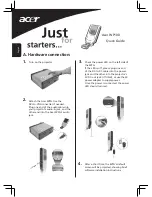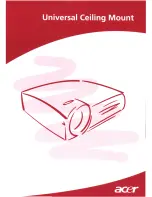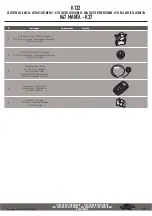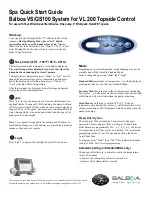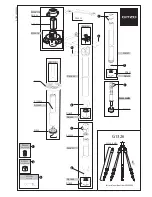
© Opticstar Ltd 2013-2015
10
APRIL
Ursa Major
MGN
M81
Bode’s Galaxy is one of the brightest galaxies in the Messier catalogue.
8.5
M82
The Cigar Galaxy is separated by 150,000 light years from the M81 and is approximately ten times smaller.
9.5
Coma Berenices
M64
The Black Eyed galaxy has taken its name from a dark dust lane near located its centre.
9.0
Virgo
M58
A barred spiral galaxy. Large telescopes will reveal it’s structure at higher magnifications.
11.0
M85
A bright galaxy that appears as a cross between a spiral and elliptical galaxy.
10.5
M87
A gigantic elliptical galaxy that resembles a very rich star cluster.
11.0
M88
Spiral galaxy that appears as an elongated glow in smaller telescopes.
11.0
Canes Venatici
M51
The Whirlpool Galaxy is a face-on galaxy. Under favourable conditions it is possible to visually observe its spiral arms.
8.0
M3
Globular cluster with around 500 stars. Best observed at higher magnifications.
7.0
MAY
Canes Venatici
MGN
M63
The Sunflower Galaxy is a barred spiral galaxy. Large telescopes may reveal a degree of detail.
8.5
Coma Berenices
M100
Face-on spiral galaxy with a low surface brightness. The two main spiral arms are only visible in large telescopes.
10.5
Scorpius
M4
The Cat’s Eye is a bright globular cluster. A large telescope is needed to start resolving individual groups of stars.
7.5
M6
The Butterfly Cluster is a bright open cluster that lies close to the centre of our Galaxy.
4.5
M7
Ptolemy’s Cluster is a bright open cluster of around 80 stars.
3.3
Coma Berenices
M53
Globular cluster. Higher magnifications will begin to resolve some detail.
8.5
JUNE
Hercules
MGN
M13
The Hercules Cluster is perhaps the finest in the Northern Hemisphere consisting of around 400,000 stars.
7.0
NGC6210
Planetary nebula with a blue tint. Higher magnifications will reveal its structure.
9.0
Serpens
M5
This globular cluster is better observed at medium magnifications.
7.0
Dragon
NGC6543
The Cat’s Eye is a bright planetary nebula. Large telescopes may show its central star at higher magnifications.
8.8
NGC4565
The largest edge-on galaxy as seen from Earth. It appears as a long streak of light with a bright core and a dark lane. 10.3
Ophiuchus
M9
Dense and bright globular cluster partially obscured by interstellar dust.
9.0
M10
Well resolved globular cluster.
7.5
M14
Large and bright globular cluster.
9.5
M19
Globular cluster.
8.5
M62
Globular cluster at least three fast rotating stars in its centre known as pulsars.
8.0
M107
Globular cluster possibly obscured by interstellar dust.
10.0
IC4665
Open cluster.
4.2

















